Wind Farms: Revolutionizing Energy Storage and Delivery
- PM
- July 17, 2024
- Edited 12 months ago
Table of Contents
In the face of climate change, the shift to renewable energy is no longer optional but necessary. Wind farms have become a key player in this transition, harnessing the power of wind to generate electricity without the carbon footprint associated with fossil fuels. Yet, a significant challenge remains: how to store and deliver surplus energy effectively. A recent study sheds light on a promising solution, showing that wind farms can generate power and store and provide excess energy when demand spikes.
This breakthrough could transform our thoughts about renewable energy, offering a more reliable and efficient power supply. Let’s dive into how this works and what it means for the future of energy.
Understanding Wind Power Energy Storage
Wind power energy storage is the process of capturing excess energy produced by wind turbines and saving it for future use. Traditionally, the intermittent nature of wind has posed challenges to energy grid stability. When the wind blows strongly, turbines generate more electricity than needed. Conversely, during calm periods, energy production drops, creating potential gaps in supply.
Recent advancements have shown that integrating energy storage systems with wind farms can mitigate these issues. These systems store surplus energy during peak production times and release it when the wind isn’t blowing, ensuring a steady and reliable power supply.
How Wind Farms Store Surplus Energy
The study highlights several methods wind farms can use to store excess energy. One promising technology is battery storage. Modern batteries, such as lithium-ion, can store large amounts of electricity and discharge it quickly when needed. By pairing wind turbines with battery systems, surplus energy can be stored efficiently and used to balance supply and demand.
Another method is pumped hydro storage. This technique involves using excess electricity to pump water to a higher elevation. When energy is needed, the water is released to flow back down through turbines, generating electricity. This method is highly efficient and has been used successfully in various parts of the world.
Thermal storage is also gaining traction. Here, excess electricity is used to heat a medium, such as molten salt or water. The stored heat can later be converted back into electricity or used directly for heating purposes.
Each of these methods has its advantages and can be tailored to specific regional needs and resources. The integration of these storage systems with wind farms marks a significant step toward making renewable energy more dependable.
Benefits of Wind Power Energy Storage
The benefits of integrating energy storage with wind farms extend beyond ensuring a reliable power supply. One of the most significant advantages is the potential to reduce greenhouse gas emissions. By storing and using surplus wind energy, reliance on fossil fuels for backup power decreases, leading to lower carbon emissions.
Moreover, energy storage enhances grid stability. Fluctuations in power supply can cause voltage instability and outages. With storage systems in place, excess energy can be released during low production periods, maintaining a consistent flow of electricity.
Additionally, wind power energy storage can lead to cost savings. During times of high electricity demand, energy prices spike. Stored energy can be used during these periods, reducing the need to purchase expensive electricity from the grid. This lowers costs for consumers and reduces strain on the grid during peak times.
Challenges and Solutions
While the benefits are clear, integrating energy storage with wind farms does come with challenges. One significant hurdle is the cost. Energy storage technologies, especially batteries, can be expensive to install and maintain. However, costs steadily decrease as technology advances and economies of scale come into play.
Another challenge is the efficiency of storage systems. No system is 100% efficient; energy is always lost during storage and retrieval. Continued research and development are crucial to improving the efficiency of these technologies.
Regulatory and policy support is also essential. Governments need to create favorable policies that incentivize the adoption of energy storage solutions. This includes subsidies, tax incentives, and funding for research and development.
Finally, integrating these systems into the existing grid infrastructure is challenging. Upgrading the grid to accommodate storage solutions requires significant investment and coordination. However, the long-term benefits of a more stable and sustainable energy grid make this investment worthwhile.
Real-World Applications
Several real-world examples demonstrate the potential of wind power energy storage. In Texas, a large wind farm has successfully integrated battery storage, providing a reliable power supply even during periods of low wind. This project has shown that energy storage can significantly enhance the reliability and efficiency of wind power.
In Europe, pumped hydro storage has been used for decades to store excess wind energy. Countries like Norway and Switzerland have utilized their natural topography to create efficient and effective storage systems. These examples provide valuable insights and lessons for other regions looking to adopt similar solutions.
Thermal storage is also being explored in various parts of the world. In Spain, for instance, excess wind energy is used to heat molten salt, which is then stored and converted back into electricity when needed. This approach is particularly useful in regions with significant temperature variations.
The Future of Wind Power Energy Storage
The future of wind power energy storage looks promising. As technology continues to evolve, we can expect to see even more efficient and cost-effective storage solutions. Innovations in battery technology, such as solid-state batteries, hold the potential to revolutionize energy storage with higher energy densities and longer lifespans.
Moreover, the integration of artificial intelligence and machine learning can optimize the operation of wind farms and storage systems. These technologies can predict energy production and demand patterns, ensuring that surplus energy is stored and used most effectively.
Policy support will play a crucial role in the future of wind power energy storage. Governments worldwide are recognizing the importance of renewable energy and are likely to continue providing incentives for energy storage projects. International cooperation and knowledge sharing will also be vital in overcoming challenges and accelerating the adoption of these solutions.
Conclusion
The ability of wind farms to store and deliver surplus energy marks a significant milestone in the journey towards a sustainable and reliable energy future. Wind power energy storage not only addresses the intermittency issue of wind energy but also offers numerous benefits, including reduced greenhouse gas emissions, enhanced grid stability, and cost savings.
While challenges remain, continued technological advancements, supportive policies, and successful real-world applications provide a solid foundation for the future. As we move forward, integrating energy storage with renewable energy sources like wind will be essential in building a resilient and sustainable energy system for future generations.
Embracing these innovations and investing in the necessary infrastructure will ensure that we can harness the full potential of wind energy, making it a cornerstone of our renewable energy landscape. The future is bright for wind power energy storage, and its role in the global energy transition cannot be overstated.
Read More:
Future of Energy


Find out more about what MGR is doing.